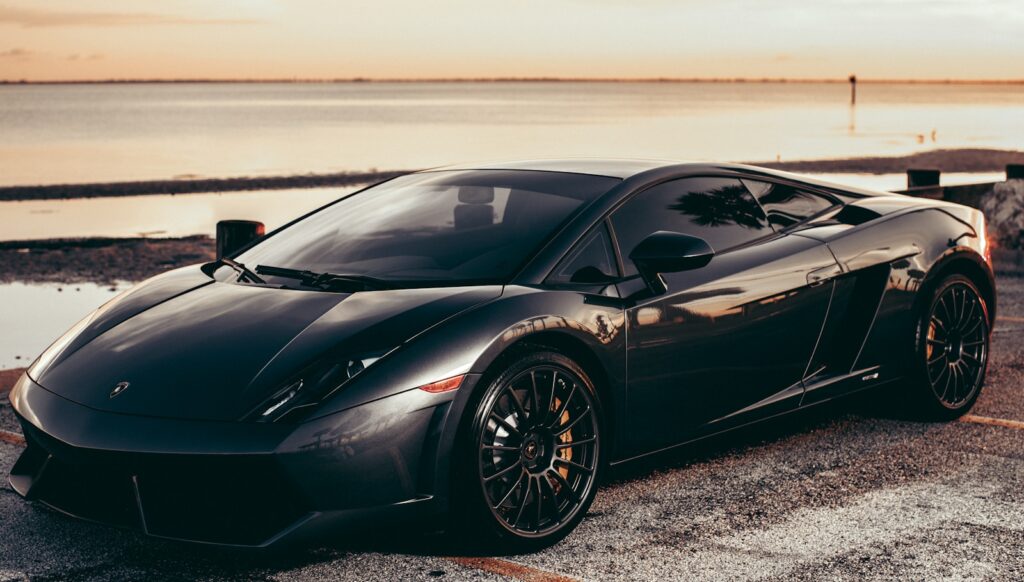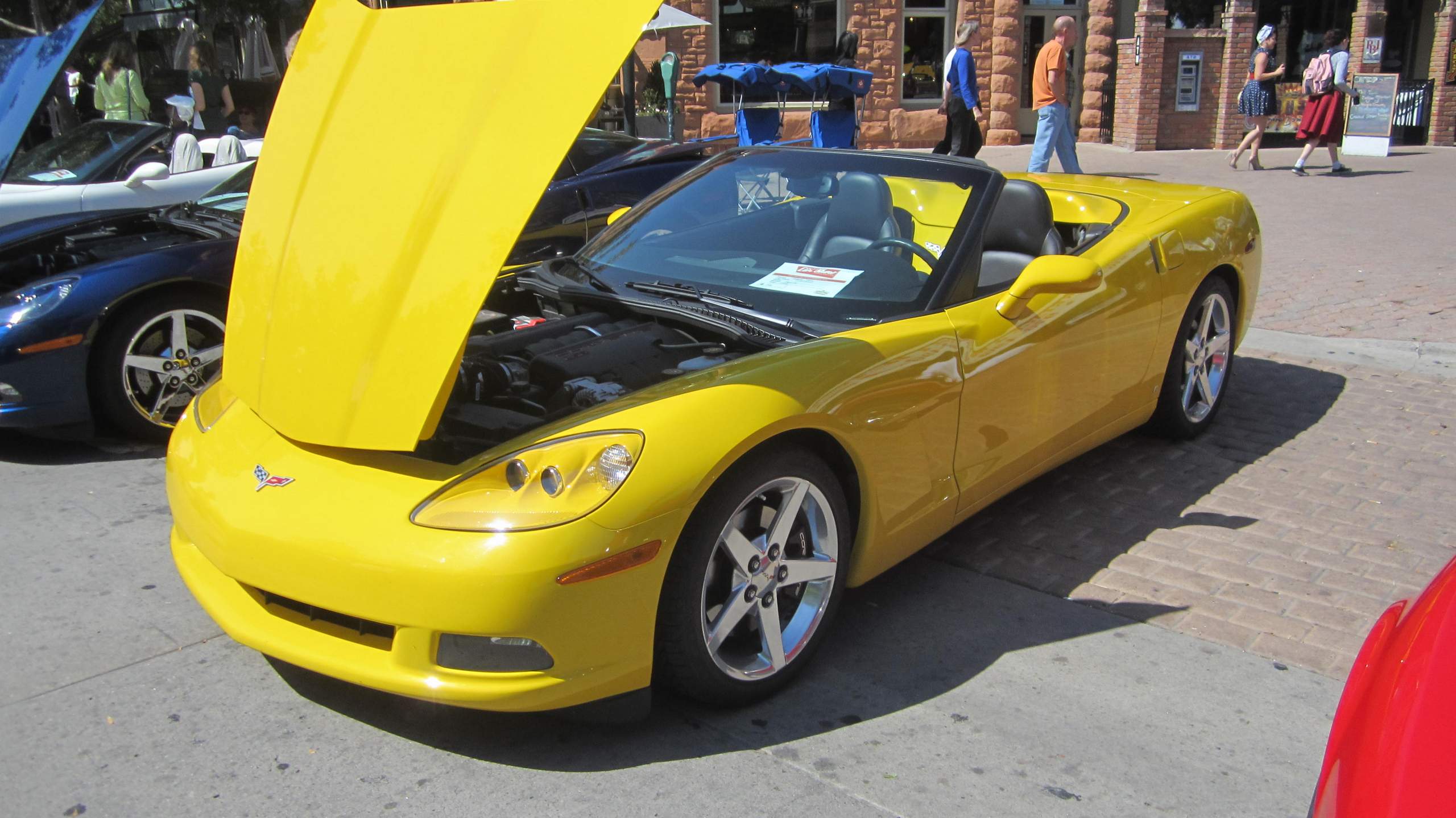
As we cruise down the highway of automotive history, we pass by shining examples of innovation, design marvels, and engineering masterpieces. Yet, every journey has its bumps, and in the world of cars, the 1970s had more than its fair share of vehicular potholes. This was a decade that, for all its iconic styles and cultural shifts, also churned out some truly, unequivocally awful automobiles. We’re talking about cars that, for various reasons — from questionable aesthetics to catastrophic engineering failures, and even outright safety negligence — earned the lasting scorn of drivers, critics, and history itself.
Strap in, because we’re taking a deep dive into the automotive underworld of the 1970s, a wild and woolly era when oil crises, nascent emissions regulations, and, frankly, some truly head-scratching design decisions converged to create a rogue’s gallery of four-wheeled (and sometimes three-wheeled) nightmares. These aren’t just cars that had a bad day; these are the legends of vehicular misery, the machines that sparked buyer’s remorse faster than you could say ‘lemon.’
So, prepare to revisit a time when the automotive landscape was dotted with genuine curiosities and outright disasters. We’re going to peel back the layers of rust, ridicule the questionable styling, and recount the tales of mechanical mayhem that made these vehicles the undisputed champions of the ‘most hated’ list. This isn’t just a list; it’s a cautionary tale, a celebration of automotive schadenfreude, and a firm reminder that even in the pursuit of mobility, some ideas are just better left on the drawing board.

1. **AMC Gremlin (1970–1978)**The AMC Gremlin, a car whose very name seemed to foretell its reputation, was American Motors’ daring — or perhaps desperate — entry into the compact car market of the early 70s. Designed to compete with foreign imports, it definitely stood out, though not always for the right reasons. Richard Teague’s design team famously “whacked off the rear of the AMC Hornet with a cleaver,” resulting in what many, including Time magazine, would dub one of the 50 worst cars of all time, and Dan Neil specifically noted its “curiously proportioned” aesthetic.
Beyond its polarizing, almost comical styling, the Gremlin was a lesson in automotive austerity. It was described as “cheap and incredibly deprived,” a sentiment reinforced by features like “vacuum-operated windshield wipers” that “hearkened back to the technologically sophisticated days of 1935,” as author Eric Peters sarcastically pointed out in his book *Automotive Atrocities! The Cars We Love to Hate*. Forget modern amenities; this car was about getting from A to B, albeit often with a distinct lack of grace or comfort.
Driving the Gremlin was, by many accounts, an exercise in frustration. Peters noted its absence of disc brakes and radial tires, while Dan Neil described it as “awful to drive, with a heavy six-cylinder motor and choppy, unhappy handling due to the loss of suspension travel in the back.” The Gremlin might have been “quicker than other subcompacts,” but, as Neil humorously added, “alas, that only meant you heard the jeers and laughter that much sooner.” This wasn’t a driver’s car; it was a conversation starter, often for all the wrong reasons.
Its distinctiveness, however, also earned it a unique place in automotive lore. CNN included it on their “Ten Most Questionable Cars of All Time” list, acknowledging that it could be seen as either a “daring leap forward by an innovative underdog” or “a desperate attempt to do something – anything – that would stand out.” It placed 4th on Car Talk’s “Worst Car of the Millennium” poll and made CNBC’s list of the ten ugliest cars of all time. Edmunds.com summed up its status perfectly, ranking it the 19th worst car of all time and declaring, “it runs second only to its brother the Pacer in Loserland.”
Read more about: From Anemic to Awkward: Unmasking 15 Muscle Cars That Truly Missed the Mark – And Why We Can’t Forget Them

2. **Chevrolet Vega (1970–1977)**The Chevrolet Vega arrived on the scene with a fanfare of critical acclaim, even snatching the coveted Motor Trend Car of the Year award for 1971 and becoming a best seller. General Motors, in an attempt to combat the influx of small, fuel-efficient imports, poured considerable resources into this new compact. It boasted innovations like an aluminum block engine and a new method of rustproofing, initially promising a bright future for the American small car.
However, the Vega’s glowing debut quickly devolved into an epic saga of automotive woe. Its reputation was “permanently damaged upon the revelation of severe quality and reliability issues.” That innovative aluminum engine? Prone to “premature engine failure” and a thirst for oil that would make a Saudi sheikh blush. And that cutting-edge rustproofing? Turns out, the Vega had an “extreme vulnerability to corrosion,” transforming once-shiny metal into Swiss cheese faster than you could say “junkyard.”
By the late 1970s, the sheer volume of problems meant Vegas were being scrapped at such a high rate that “many junkyards refused to purchase them.” It became a symbol of Detroit’s failure to build a competitive small car, with Autoblog bluntly stating it “proved the point that American car makers did not make good small cars.” Car and Driver, mincing no words, included it among the “10 most embarrassing award-winning cars,” quipping, “It seemed the only time anyone saw a Vega on the road not puking out oily smoke was when it was being towed.”
The Vega’s legacy isn’t just one of mechanical failure; it’s a cautionary tale of corporate hubris. Popular Mechanics dubbed it one of the “10 Cars That Damaged GM’s Reputation,” asserting it was “the catalyst that put General Motors on the downward spiral which culminated in its bankruptcy in 2009.” Former GM executive John DeLorean even dedicated an entire chapter to the Vega in his book, detailing how GM “knew about its quality problems prior to launch.” Edmunds.com, not one to pull punches, ranked it the 5th worst car of all time. The Vega wasn’t just a car; it was “GM’s Watergate/Waterloo, the beginning of the inevitable end.”
Read more about: 10 Collectible Classic Cars That Are Cheap & Easy To Maintain: Drive Your Dream Without Breaking the Bank

3. **Ford Pinto (1971–1980)**The Ford Pinto was a strong seller with a decent initial reception, a compact answer to the demands of a changing market. However, its name, unlike many others on this list, would forever be etched into the public consciousness for one horrifying, indelible reason: fire. The Pinto became infamous due to a “major safety issue: its fuel tank was prone to rupturing in rear-end collisions, leading to fiery accidents.” It wasn’t just a flaw; it was a deadly design oversight that would ignite one of the biggest corporate scandals of the era.
The infamy deepened with the revelation of the “Pinto memo,” a chilling document that exposed Ford executives’ knowledge of the defect. They had “calculated that fixing it would be more expensive than settling lawsuits from accidents,” effectively putting a price tag on human lives. As Eric Peters eloquently put it in *Automotive Atrocities!*, this scandal made one wonder, “See how much corporate America cares?” The Pinto quickly transformed from a simple car into “a symbol of corporate indifference to safety,” a stain on Ford’s reputation that would never truly fade.
Images of “flaming Pintos are so seared into the public consciousness” that it’s hard to imagine the car *not* on fire, as CNN wryly observed. Autoblog, in ranking it the #1 “Dumbest Car of All Time,” highlighted the tragic irony of marketing such a dangerous vehicle to “the least experienced drivers in America.” This colossal failure didn’t just sour those young drivers and their parents on Ford, it “soured a lot of those kids and their parents on buying more Fords just as the Asians were rising and redefining quality in America.” It was a pivotal moment that underscored the vital importance of safety over profit.
And just to pile on the misery, the Pinto also suffered from a rather unfortunate naming gaffe. While named after the pinto horse, “Pinto” happens to be slang for male genitalia in Portuguese. This cultural oversight “resulting in poor sales on the Brazilian market” and earned it a spot on International Business Times’ “5 Worst Name Oversights.” Between the fiery reputation and the embarrassing moniker, the Pinto truly had it all. It placed third in Car Talk’s “Worst Car of the Millennium” survey and was ranked the 16th worst car of all time by Edmunds.com.
Read more about: Hold My Beer: These 14 Cars Went From Automotive Icons to Total Cringe Fails and We’re Not Sorry
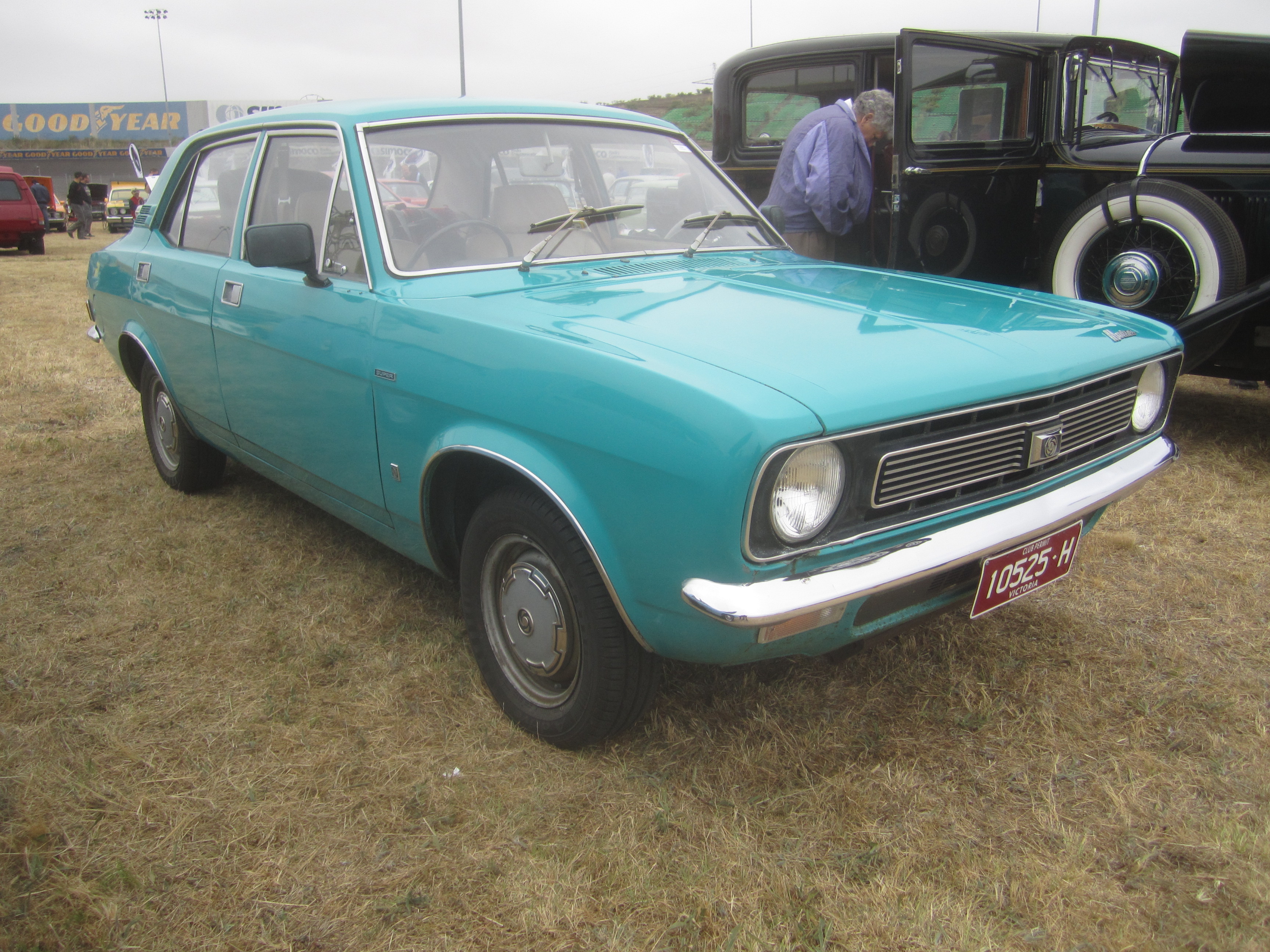
4. **Morris Marina (1972–1980)**Ah, the Morris Marina. A car so profoundly uninspired, so thoroughly mediocre, that its existence almost feels like a dare. From the moment it hit the streets, the Marina was roundly criticized for its “poor performance, styling, handling and build quality.” British Leyland’s grand idea for a competitor in the family car market quickly became a byword for everything wrong with British automotive manufacturing of the era.
One of its most damning criticisms was how dreadfully outdated it felt, even at its launch. Its “technical layout was largely based on the Morris Minor whose development started in the 1940s.” Imagine driving a brand-new car in the 1970s that felt like it belonged in a post-war museum. It wasn’t just behind the times; it was stubbornly, defiantly antiquated. The Telegraph, never one to mince words, included the Marina on its infamous list of “10 Cars That Should Have Never Been Produced.”
No one, however, has championed the Marina’s awfulness quite like motoring journalist Jeremy Clarkson. He has made an art form of criticizing and destroying Marinas on television, declaring that “it cost 40 million pounds to develop, which since it was meant to be hopeless, was too much.” His particular venom was reserved for its “rear suspension ‘dates back to a medieval hand cart.'” The sight of a Marina being subjected to automotive game of Conkers or repeatedly being flattened on *Top Gear* became a running gag, so consistent that it drew “the ire of Marina enthusiasts and resulted in complaints been made to the BBC.”
Even James May, Clarkson’s often more sympathetic *Top Gear* colleague, acknowledged the Marina’s place in history, albeit as “a warning from history,” suggesting “at least one Marina needs to be preserved in a museum.” The Marina wasn’t merely a bad car; it was a symptom, a symbol of industrial decline, and a car that CarThrottle ranked as the number one “Worst Car Ever Made In The UK.” It was a vehicle that, in its utter lack of redeeming features, ironically became iconic.

5. **Reliant Robin/Rialto (1973–2002)**The Reliant Robin, affectionately — or perhaps sarcastically — known as the “Plastic Pig,” wasn’t just a car; it was a phenomenon, a three-wheeled testament to British eccentricity and tax loopholes. Throughout its incredibly long production run, the Robin carved out a unique place in British culture, thanks largely to regulations that allowed three-wheeled vehicles to be taxed as motorcycles and driven with a motorcycle license. It was a sales success, even living long enough to see its successor, the Rialto, revert to the more famous Robin nameplate.
Despite its enduring popularity, the Robin became the “butt of many jokes due to its three-wheeled nature, fibreglass bodyshell and primitive, old-fashioned technique.” It’s often cited among the worst cars ever made, a vehicle where the inherent instability of having only one wheel at the front made for a notoriously challenging, and often terrifying, driving experience. Edmunds.com perfectly captured this, describing it as “ludicrously unstable three-wheeler that turns turtle on its plastic body at the slightest provocation.”
No one exploited the Robin’s inherent instability with more glee than Jeremy Clarkson on *Top Gear*. In a now-legendary episode, Clarkson drove a Robin and made it roll over multiple times, describing the experience as dangerous as “inviting your mum ’round for an evening on chatroulette.” He concluded, with typical Clarkson hyperbole, that the Robin “wasn’t funny, it was a complete menace.” The spectacle was so memorable that even racing driver The Stig and Ken Block couldn’t complete a clean lap in a specially doctored Robin on the test track.
It was later revealed that the show’s Robin had its differential modified to *allow* it to roll over easily, and Clarkson himself admitted he actually likes the Robin. But the damage was done, the image cemented. It appeared in books like *The Worst Cars Ever Sold* and *Crap Cars*, was voted the 8th worst car ever in an Auto Express poll, and in a 2013 poll, was crowned the “worst British car of all time.” Underpowered by a 750cc engine, its distinct shape and fiberglass body made it unique, but its practical shortcomings and undeniable quirks made it a beloved, if reviled, part of automotive history. CarThrottle ranked it number two on its list of “10 Of The Worst Cars Ever Made In The UK.”
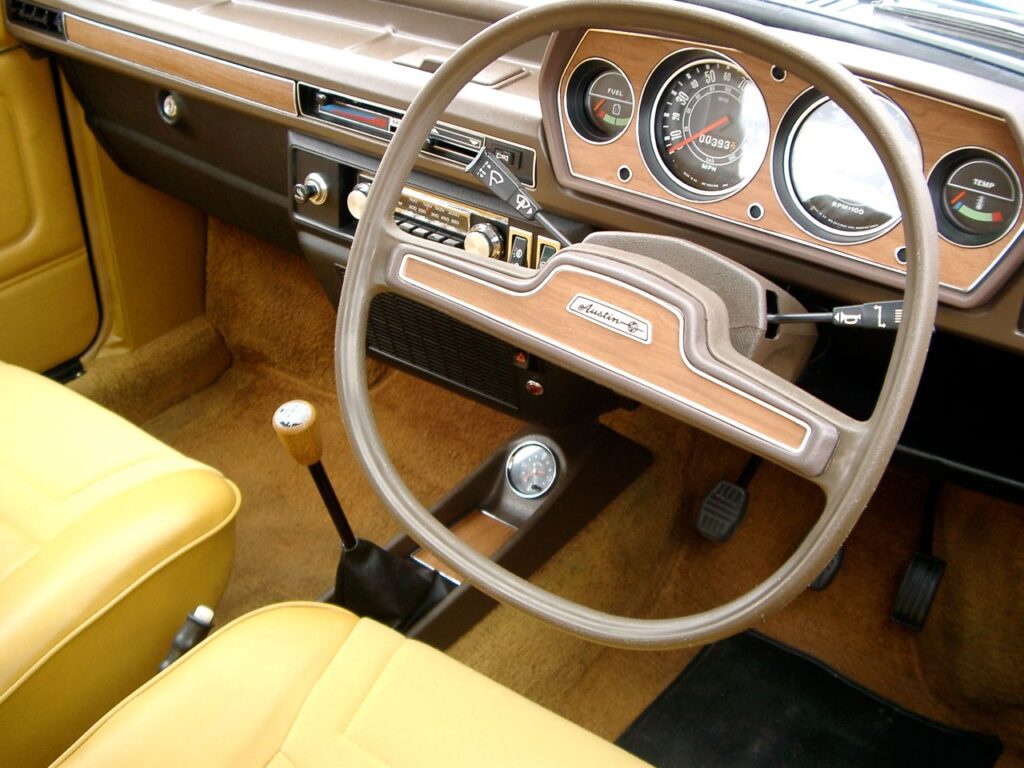
6. **Austin Allegro (1973–1982)**The Austin Allegro, launched in 1973, was British Leyland’s ambitious attempt at a “radical clean sheet design.” Unfortunately, what emerged from the factory floors was a vehicle that would swiftly become synonymous with “poor quality and odd styling,” cementing its place in the pantheon of automotive failures. It was a car that seemed to defy common sense, from its aesthetics to its engineering, embodying a period of profound missteps for the British auto industry.
Writer Richard Porter, in his book *Crap Cars*, famously quipped that “the only bit of the Allegro they got even vaguely right was the rust-proofing.” This damning praise speaks volumes about the rest of the car’s attributes. The Allegro quickly became a symbol of “waste, inefficiency and poor quality,” a rolling indictment of the production and management techniques prevalent at British Leyland during its era of creation. It wasn’t just a car; it was a cautionary tale in metal and plastic.
Jeremy Clarkson, ever the purveyor of strong opinions, has heaped scorn upon the Allegro, although in a surprising twist, he concluded it was a “better car than the Marina” – but only because it was “a horrible car in a more original way.” Clarkson’s specific criticisms were scathing: he declared it “hideously ugly,” suggested that whoever proposed its infamous “square steering wheel should have had pens thrown at him,” and humorously noted that “it was more aerodynamic going backwards” than forwards.
The Allegro’s reputation was so ingrained that it transcended the automotive world. In 2007, Sir Digby Jones, while criticizing the inefficiencies of a government council, invoked the car by stating, “It is what I call ‘the British Leyland model’ – you put a lot of money in at the top, and an Austin Allegro comes out at the bottom.” This comparison alone solidifies the Allegro’s status as a byword for systemic failure. Edmunds.com, in its ultimate critique, ranked the Allegro as the 81st worst car of all time, expressing gratitude that “it was never exported to the United States.” It was a relief the world was spared from this particular British Leyland blunder.”
Continuing our journey through the decade’s vehicular missteps, this section spotlights six more infamous cars, examining their critical reception, production woes, and how their shortcomings defined a turbulent era for the auto industry. Prepare for another round of automotive schadenfreude as we delve into these four-wheeled fiascos.

7. **Ford Mustang II (1974–78)**The Ford Mustang II arrived with a perplexing reception, initially earning praise and the Motor Trend Car of the Year award in 1974. Its opportune timing during the 1973 oil crisis made its promise of good fuel economy a beacon for consumers. For a brief period, it seemed to be the right car at the right time, a compact answer for a changing world, a smaller, more economical pony car for a gas-guzzling weary public.
However, the passage of time has been less kind. Today, it’s widely criticized, often dismissed as a “poor-performing Pinto derivative.” Car and Driver, pulling no punches, included it among their “10 most embarrassing award-winning cars,” lamenting that “Instead of the powerful car the Mustang had been, here was a poseur with wheezing four- and six-cylinder engines under the hood.” They concluded, rather damningly, that “except for better fuel economy, there were no compensating virtues.” It was a Mustang in name, perhaps, but for purists, a profound disappointment in spirit.
Autoblog even questioned the integrity of its Motor Trend award, suggesting the magazine might have been “trading annual honors for ad pages.” Eric Peters, in his *Automotive Atrocities! The Cars We Love to Hate*, vividly described Ford as “reeling, wild-eyed and increasingly desperate” in the wake of the oil crisis, leading them to “belch up the Pinto-sourced, ‘downsized’ Mustang II – a car with all the kick of a watered-down Shirley Temple.” Edmunds.com perhaps delivered the final blow, ranking it as the 2nd worst car of all time and declaring it “instantly appalling to Mustang lovers.” It’s a contentious chapter in the Mustang’s otherwise illustrious history, proving that not all attempts to adapt are met with enduring acclaim.
Car Model Information: 2023 Acura MDX Base
Name: Second generation
Caption: Ford Mustang II coupe
Aka: Ford Mustang II , Ford T5 (in Germany)
Class: Pony car,Subcompact car
Production: 1973–1978
ModelYears: 1974–1978
Predecessor: Ford Mustang (first generation)
Successor: Ford Mustang (third generation)
Assembly: Unbulleted list
Layout: Front-engine, rear-wheel-drive layout
BodyStyle: coupé,hatchback
Related: Ford Pinto,Ford Pinto
Manufacturer: Ford Motor Company
Engine: ubl
Transmission: ubl
Wheelbase: cvt
Length: cvt
Width: cvt
Height: cvt
Designer: Buck Mook, Dick Nesbitt
Categories: All articles with dead external links, All articles with unsourced statements, Articles with dead external links from April 2024, Articles with permanently dead external links, Articles with short description
Summary: The second-generation Ford Mustang, marketed as the Ford Mustang II, is a two- or three-door, four-passenger, front-engine/rear-drive pony car manufactured and marketed by Ford from 1973 until 1978. Introduced in September 1973 for the 1974 model year, the Mustang II arrived roughly coincident with the oil embargo of 1973 and subsequent fuel shortages. Developed under Lee Iacocca, it was an “entirely new kind of pony car.” Ford “decided to call it Mustang II, since it was a new type of pony car designed for an era of high gas prices and fuel shortages.”
The Mustang II was 490 lb (222 kg) lighter and almost 19 in (483 mm) shorter than the 1973 Mustang, and derived from the subcompact Pinto platform. While sharing a limited number of driveline components with the Pinto, the Mustang II employed an exclusive subframe, isolating its front suspension and engine mount subframe. The steering used a rack-and-pinion design.
Named Motor Trend’s 1974 Car of the Year and reaching over 1.1 million sales over four years of production, the Mustang II is noted simultaneously for both its marketing prescience and strong sales – while criticized as having abandoned essential aspects of the Mustang heritage and described, in a retrospective after 40 years since its introduction, as embodying the Malaise era.
Get more information about: Ford Mustang (second generation)
Buying a high-performing used car >>>
Brand: Ford Model: Mustang II
Price: $40,888 Mileage: 20,145 mi.

8. **AMC Pacer (1975–80)**When the AMC Pacer debuted in 1975, it was an undeniable attempt to be revolutionary, boasting the distinction of being the first mass-produced car to truly embrace a cab-forward design. This avant-garde approach aimed to maximize interior space and visibility with an extensive glass area, creating a distinctive “fishbowl” aesthetic that instantly set it apart. AMC envisioned a car for the future, a bold statement in a decade defined by shifting automotive priorities, but its radical styling quickly became its most polarizing feature.
Its odd, bulbous styling immediately became a focal point for critics and the public alike. Dan Neil of *Time* magazine famously dubbed the Pacer a “glassine bolus of dorkiness,” perfectly capturing the blend of quirky charm and undeniable awkwardness. He wryly noted that “in the summer, it was like being an ant under a mean kid’s magnifying glass,” highlighting the car’s notorious air conditioning shortcomings and the tendency of “volatile petrochemicals out-gassing from the plastic dash.” This distinct appearance cemented its place in pop culture, earning it nicknames like “the fishbowl” and making it an enduring symbol of ‘nerdy’ 70s Americana, further amplified by its role in *Wayne’s World*. A 2007 survey by Hagerty Insurance even named it the worst car design of all time.
Despite the relentless criticism and its designation as an “icon of disenfranchised losers” by Edmunds.com, the Pacer has ironically found a unique niche. Featured prominently on the cover of Eric Peters’ *Automotive Atrocities!*, Peters suggests it “defined the 1970s even more than a Bee Gees 8-track.” Today, this once-maligned vehicle has garnered newfound collector status as a piece of kitsch. Peters acknowledged this shift, noting, “As a car, it isn’t much – but as a conversation piece, it’s almost as good as having a restored Elvis: Alive! pinball machine in your den.” The Pacer, it seems, has the last laugh as a truly unforgettable, if often ridiculed, slice of automotive history.

9. **Bricklin SV-1 (1975)**Envisioned as a visionary leap in automotive safety and design, the Bricklin SV-1 emerged from Malcolm Bricklin’s ambition. Funded by New Brunswick, Canada, the SV-1 was meant to be a groundbreaking “Safety Vehicle 1,” featuring brightly colored, dent-resistant plastic bodies and innovative gull-wing doors. On paper, the concept was dazzling, promising a new era of sports cars prioritizing protection. Yet, its journey from grand vision to showroom reality proved fraught, culminating in production stopping abruptly in early 1976 when the company went into receivership.
Autoblog offered a poignant warning: “When an automobile executive starts a new car company and proposes to name the car after himself, run like a stag in the opposite direction.” This indicated the Bricklin saga was less about innovation, more about an ambitious dream crashing against manufacturing realities. Eric Peters, in *Automotive Atrocities!*, acknowledged the SV-1’s pioneering safety features but noted it was “basically a kit car cobbled together using mish-mashed leftovers,” observing, “It had the look and feel of a teenage hot rod project built in the backyard.” The lack of adequate funding and technical resources was glaring.
Beyond questionable assembly, the SV-1 suffered critical performance issues; its iconic gull-wing doors proved notoriously unreliable. More profoundly, its weight, burdened by safety-designed panels and bumpers, created “incredible, crust-of-the-Earth-cooling slowness,” as Dan Neil quipped in *Time* magazine. Emissions-limited V8s simply couldn’t cope, rendering the SV-1 incapable of outrunning even “the Rose Bowl Parade.” Edmunds.com delivered the ultimate burn, ranking it 72nd worst and claiming it “makes the DeLorean look like an engineering magnum opus.” A sad epitaph for a car that aimed for the stars but barely made it off the ground.

10. **Triumph TR7 (1975–81)**The Triumph TR7, introduced in 1975, arrived as one of the last gasps from the venerable British marque. Designed for the American market, its distinctive wedge shape was meant to be futuristic, but instead became an instant source of division and ridicule. Its most infamous design cue was the strange, inexplicable curve in the side, a feature so perplexing that an urban legend emerged: Italian designer Giorgetto Giugiaro, upon seeing the TR7, supposedly walked to the other side only to exclaim, “Oh my god – they did it to the other side, too!” The story perfectly encapsulated the widespread bewilderment over its styling.
Styling was far from the TR7’s only Achilles’ heel. The car was plagued by litanies of quality problems, consistently undermining its image. Dan Neil, writing for *Time* magazine, declared that “the cars were so horribly made. The thing had more short-circuits than a mixing board with a bong spilled on it.” This rampant unreliability stemmed largely from tumultuous industrial relations within British Leyland, with frequent strikes at the Speke factory severely impacting build quality. German magazines even detailed an engine breakdown in a TR7 press car, cementing its mechanical woes.
Adding to its woes, the TR7 was designed as a roadster but initially only available with a permanent roof due to proposed US rollover safety regulations—regulations that never materialized. A convertible version eventually became available in 1979, and quality improved as production moved. However, by then, the damage to the TR7’s reputation was done, a classic case of too little, too late. Jeremy Clarkson famously criticized and even destroyed one. Edmunds.com ranked the TR7 as the 47th worst car of all time, a testament to how poor build quality and baffling design choices can overshadow any initial promise.
Car Model Information: 1981 Triumph TR7
Sp: uk
Name: Triumph TR7
Caption: 1975 Triumph TR7
Production: unbulleted list
Manufacturer: Triumph Motor Company
Class: Sports car
Layout: FR layout
Predecessor: Triumph TR6
Transmission: unbulleted list
Related: Triumph TR8
Engine: unbulleted list
Abbr: on (coupé)
BodyStyle: unbulleted list
Wheelbase: 85 in
Length: 160 in
Width: 66.2 in
Weight: 1101 kg
Order: flip (coupé)
Height: 50 in
Assembly: unbulleted list
Designer: Harris Mann
Categories: 1980s cars, All Wikipedia articles written in British English, All articles with unsourced statements, Articles tagged with the inline citation overkill template from January 2024, Articles with short description
Summary: The Triumph TR7 is a sports car that was manufactured in the United Kingdom from September 1974 to October 1981 by British Leyland Motor Corporation (BLMC), which changed its name to British Leyland (BL) in 1975. The car was launched in the United States in January 1975, with its UK home market debut in May 1976. The UK launch was delayed at least twice because of high demand for the vehicle in the US, with final sales of new TR7s continuing into 1982.
It was initially produced at the Speke, Liverpool, factory, moving to Canley, Coventry, in 1978 and then finally to the Rover Solihull plant in 1980.
Get more information about: Triumph TR7
Buying a high-performing used car >>>
Brand: Triumph Model: TR7
Price: $12,000 Mileage: 83,693 mi.

11. **Chevrolet Chevette (1976–87)**The Chevrolet Chevette, a ubiquitous sight for over a decade, holds a dubious distinction: GM’s response to the burgeoning demand for small, fuel-efficient imports. Initially popular due to its low price and impressive fuel economy during the 70s energy crises, the Chevette quickly became a byword for automotive austerity. It was almost universally criticized for its poor performance, shoddy build quality, and an undeniable aura of cheapness. This wasn’t a car designed to excite; it was a car designed to be *just enough*, and often, it wasn’t even that.
Despite its glaring flaws, a fascinating paradox exists: it was a sales success. CNN described it as “Pathetic” but conceded it was “not a market flop,” becoming the best-selling small car in America for 1979 and 1980, with 2.7 million units produced. This popularity didn’t translate to affection. It is “remembered today for being mechanically troubled, poorly constructed and underpowered,” a poignant reminder of Detroit’s persistent struggles. Popular Mechanics highlighted it as damaging GM’s reputation, asserting it “sold strictly on price, with no real virtues of its own,” its crude rear-wheel-drive platform contrasting sharply with advanced front-wheel-drive rivals.
The article lambasted GM for a “greatest misstep”—allowing the Chevette’s success to delay the development of a proper front-wheel-drive subcompact, leading instead to “badge engineered captive imports.” Eric Peters satirically poked fun at its name, suggesting owners could refer to their “Vette” to “comely (if gullible) prospects,” humorously adding it was “critical that said prospects consume a minimum of three double-strong Long Island Iced Teas” beforehand. Edmunds.com fittingly ranked it as the 53rd worst car of all time, a testament to its enduringly low standing.
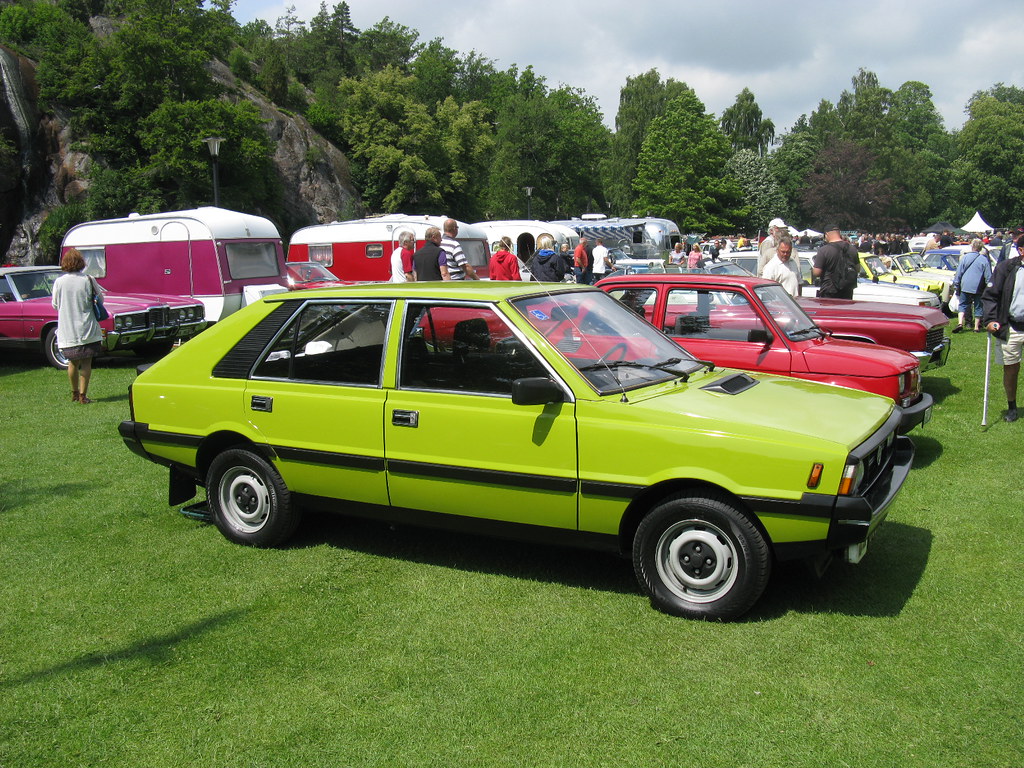
12. **FSO Polonez (1978–2002)**Venturing beyond the Western automotive landscape, our final entry brings us to the FSO Polonez, a Polish-built car that, despite ambitious aspirations, struggled to find its footing outside its home market. Launched in 1978, it was largely based on the Polski Fiat 125p but boasted a completely new hatchback body designed by the legendary Giorgetto Giugiaro. It was an ambitious undertaking for its time, representing the first Polish-built car to feature a hatchback and its own distinct design. Yet, for all its potential, the Polonez was largely panned in most markets outside Eastern Europe, consistently criticized for its poor quality, uninspired design, and lackluster performance.
When it came to the Polonez, Jeremy Clarkson was particularly brutal. His assessment was nothing short of scathing, declaring the car “as reliable and long lasting as a pensioner’s erection”—a typical Clarkson-esque gem. He added that “Of course history has served up many cars that drove as badly as this, but few looked quite so terrible.” His ultimate summation was that its only redeeming feature was its cheapness, but even then, he concluded, “it had to be, because it was a car that wasn’t really a car at all. It was a box under which the careless car buyer would discover a ’40s tractor.” This description cemented the Polonez’s fate in automotive infamy.
The Polonez’s notoriety was further amplified by its appearance on *Top Gear*, in an episode titled “The Worst Car In The History Of The World.” Clarkson was seen driving a Polonez on a country road, only for it to break down not once, but twice. This televised spectacle vividly demonstrated the car’s inherent unreliability and cemented its image as a vehicular punchline for a global audience. Its dismal performance and reception are reflected in its low rankings across various polls and lists of automotive failures, serving as a compelling reminder that even with an ambitious vision and renowned designer, a car’s ultimate success hinges on fundamental quality, performance, and reliability.
And so, our wild ride through the most despised machines of the 1970s comes to a close. From ambitious failures like the Bricklin SV-1, crumbling under its own weight of aspirations, to widespread disappointments like the Mustang II, betraying an iconic lineage, and basic workhorses like the Chevette, existing solely on price, this decade was a turbulent crucible for the auto industry. These weren’t just vehicles; they were rolling cautionary tales, symbols of corporate missteps and baffling design choices that, in hindsight, offer endless fascination and more than a few laughs. They remind us that even in the pursuit of mobility, some ideas are truly better left in the rearview mirror.



